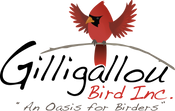Feature Image By Ronald Slabke (Own work) [CC BY-SA 3.0 (http://creativecommons.org/licenses/by-sa/3.0)], via Wikimedia Commons
Close to home here in the Ottawa Valley, the Renfrew County Biotabase reported a number of interesting findings and observations. This biotabase is an online resource that hosts a flora and fauna survey of Renfrew County, complete with surveys, sightings, and lists of species that have been seen and identified in Renfrew County.
Renfrew County is actually quite resourceful when it comes to birding. Every year they gather and provide data on winter bird populations and the distribution of birds by conducting two (2) Christmas Bird Counts, one in Pembroke, Ontario and the other in Eganville, Ontario. Another winter activity they organize is counting the winter waterfowl on the Ottawa River in conjunction with the Ministry of Natural Resources. The winter waterfowl count is open to everyone if you are interested visit their website at http://www.bsc-eoc.org/birdmon/rcb
Renfrew County often hosts a variety of public field trips throughout the year to introduce and educate participants to the biodiversity of the region. The Pembroke and Area Field Naturalist Club invites people to participate in their owl prowl, where the trip loops through a varied habitat. The guided walk uses a CD of owl calls to encourage a response. Rarely are they disappointed and often hear a response from the Barred Owl. They also say that on occasion they hear the American Woodcock and other night calling birds.
If however, you happen to reside in the south-east part of the Ottawa region, the Upper Canada Migratory Bird Sanctuary in the St. Lawrence Parks Commission keeps an online species index, keeping you up to date on what birds you can expect to see in the Sanctuary. The sanctuary covers about 9,000 hectares of a variety of wildlife habitats, including a mature upland forest, early successional woods, old fields, wetlands, and open water. With more than eight 8 kilometers of self-guided nature trails winding through these habitats, the seasoned birder and amateur naturalist, alike, have excellent opportunities to view up to 200 waterfowl, raptor, passerine, and other bird species. If cross-country skiing is your passion, what a great way to get some exercise and see wildlife on the groomed ski trails during the winter.


Comments (0)